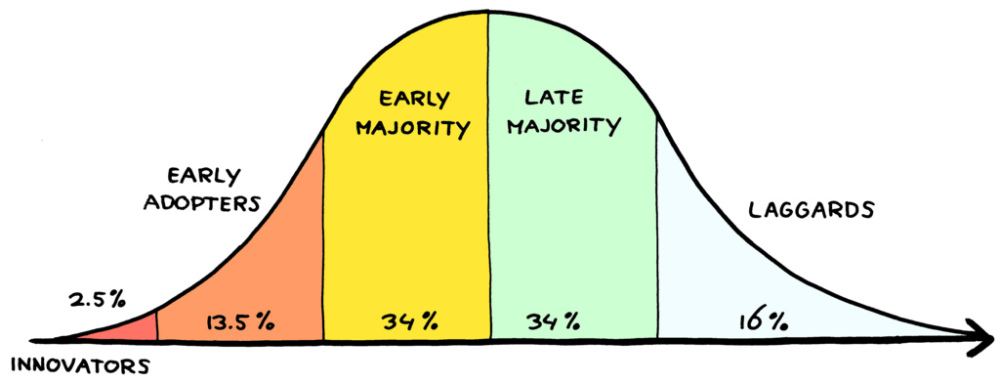After two-step flow theory scholars came with the idea of Multi-Step theory. Where two-step theory talks about the indirect effect of mass media from media to opinion leader and opinion leader to general public multi-step theory talks about innovation. In multi-step theory, scholars tried to find out in which process people accept the innovation or reject the innovation.
The concept of Diffusion of Innovation is associated with the Two-Step Flow Theory.
Diffusion of Innovation
Everett Rogers submitted this concept in the book called “ Diffusion of Innovation”. He was the American communication theorist and sociologist. he was born in 1931 in Carroll, Lowa.
Introduction
The process of dissemination of innovation, virtually that innovation does not reach the wider population, but goes to the last stage of its action or rejection in the society, i.e acceptance or rejection. According to Rogers innovation is related to any new idea, knowledge, behavior or thing.
This theory is not only talking about the quality maintenance of any new Innovation (Product) because every product has a certain amount of age but also about its market value. For any new innovation, it is important to know how much an adopter is interested in your product. It is all about his knowledge, interest, development, etc that shows their ability of acceptance towards any new innovation.
Theory
Rogers proposes that adopters of any new Innovation can be classified into five stages. He also identified the percentile of all adopters in his study.
- Innovators (2.5%): when a new product arrives in the market these are the people who buy the products are called Innovators. They are the people who trendsetters. They willingly buy products. They do not afraid to take risk while using any new product.
- Early adopters (13.5%): the early adopters like to try new things. They do not afraid to invest in new innovation. They are like innovators but are much interested and excited about any new product. They are lager than the innovator group and already have certain knowledge about the product. They have the quality of advertising the product through words of mouth. After using any product for their own they start to make tat more popular by spreading it throughout their known people.
- Early majority (34.0%): this group follows the trend but before going purchase they take little time to any decision. When the product becomes extremely popular it automatically increases the demand.
- Late majority (34%): this group has a lack of confidence in new innovation. They keep themselves behind and purchase the product after it already bough by a certain group of people. They believe in not to take a bad decision for a new purchase. They purchase the product at the time when its popularity starts decreasing.
- Laggards (16.0): this group does not like new innovations or ideas. They are not trend-oriented people. They wait for the time when sales get their lower price.

The graph is shown above shows a cumulative percentage of adopters over a time. It is slow in the beginning, in the middle it increases as adoption increases, then it goes on and at the end it percentages decreases as laggards have not adopted.
Each adopters ability and willingness is depended on their interest, knowledge, trial, and adoption. People can fall in different categories for different innovations. A teacher can be an early adopter of the new technical method, but a late adopter of fashion innovation.
An attention-grabbing discussion is worth comment. I think that it’s best to write more on this matter, it may not be a taboo subject however generally individuals are not sufficient to speak on such topics. To the next. Cheers
LikeLiked by 1 person
It’s hard to search out educated people on this subject, but you sound like you realize what you’re speaking about! Thanks
LikeLiked by 1 person
I am perpetually thought about this, thanks for putting up.
LikeLike
You need to take part in a contest for one of the finest websites on the net. I will recommend this website!
LikeLike
Like!! Really appreciate you sharing this blog post.Really thank you! Keep writing.
LikeLike